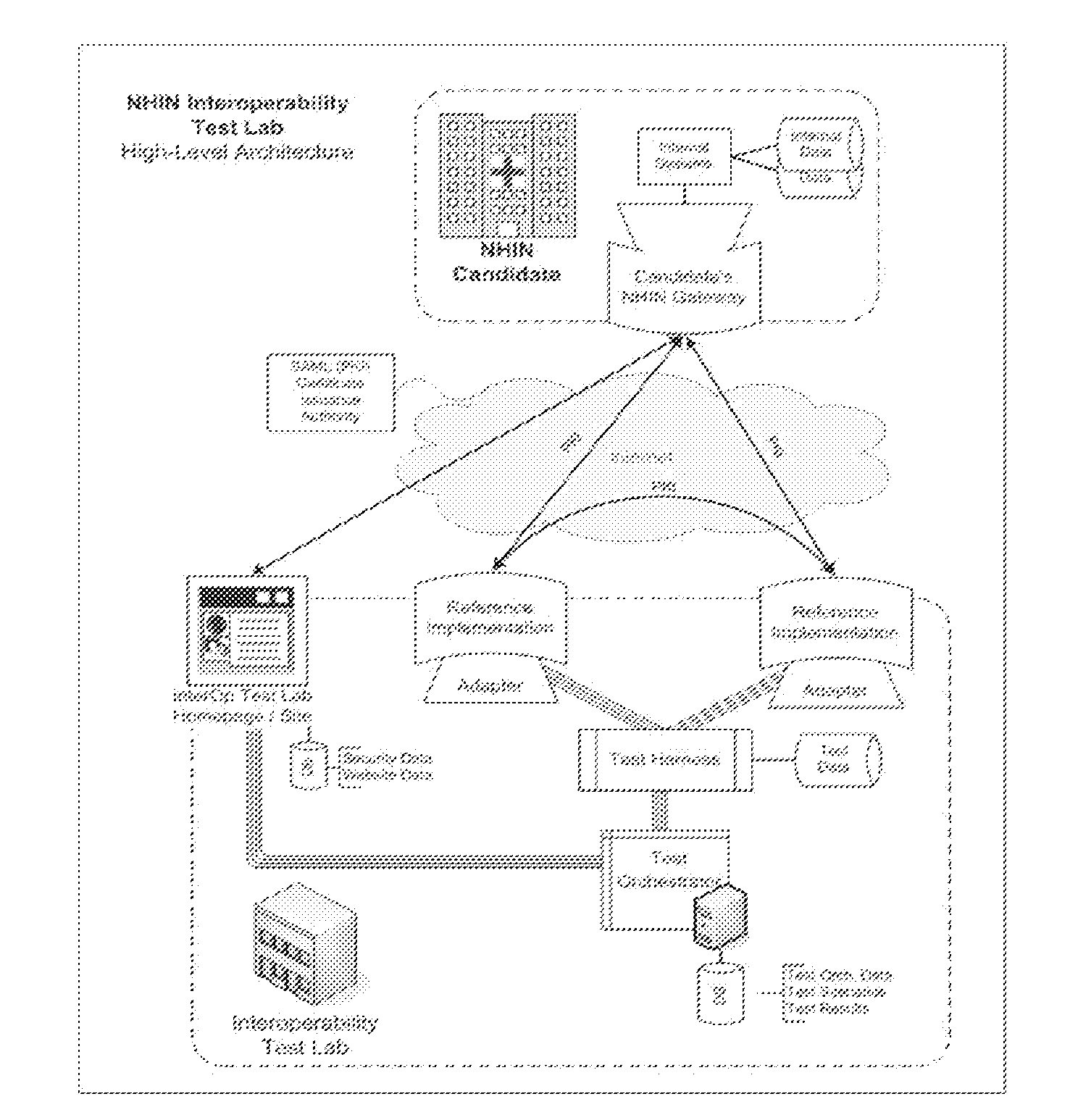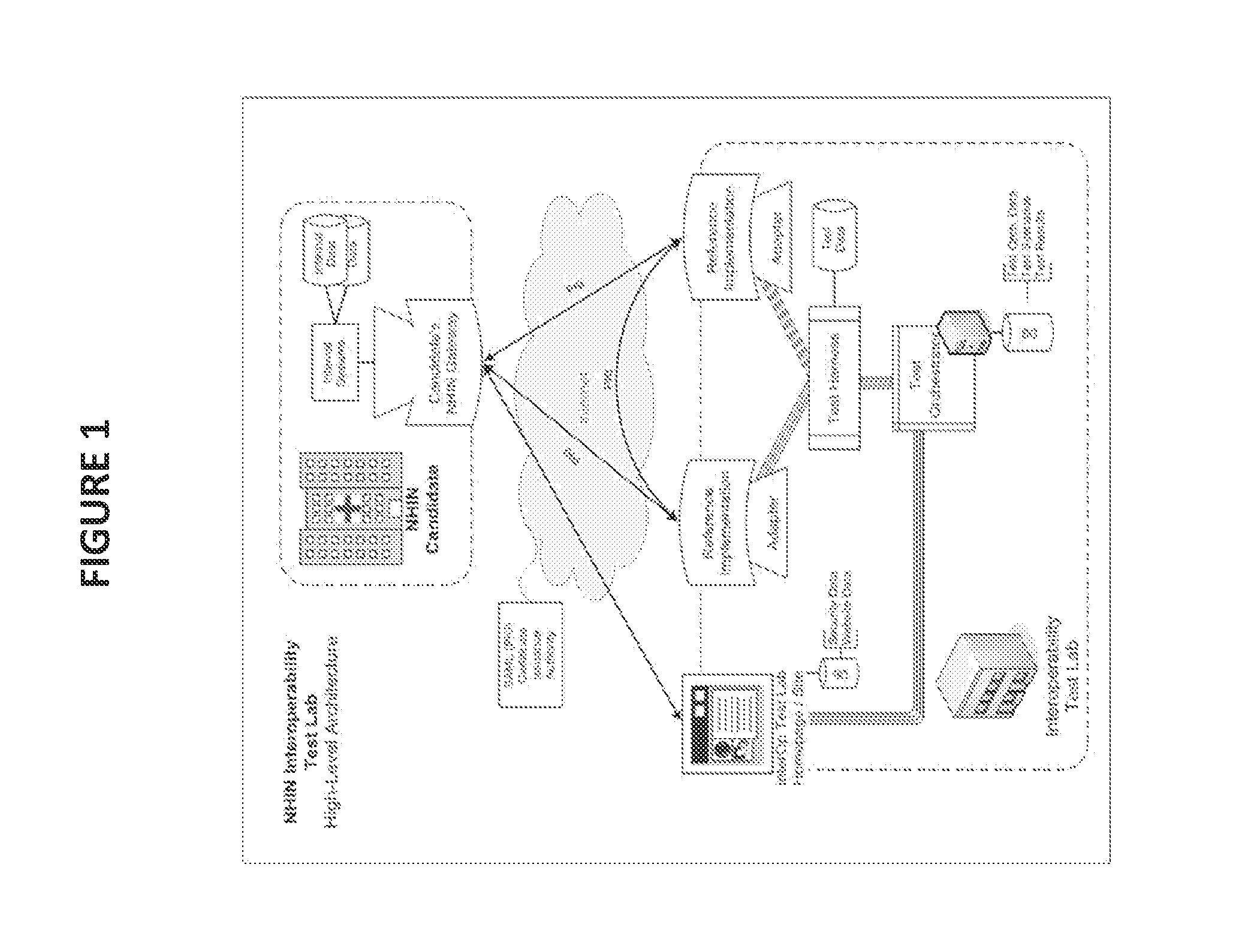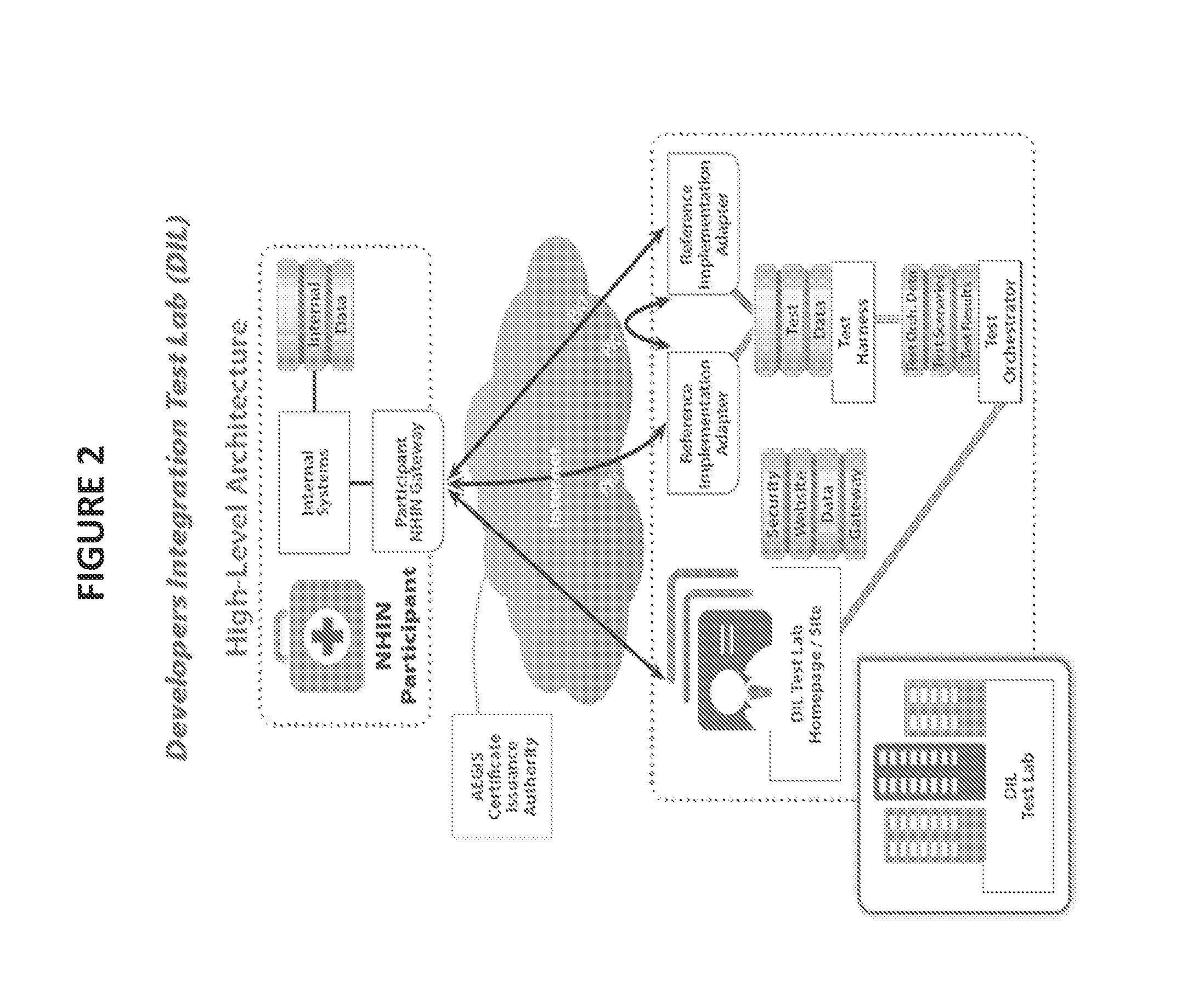Automated Conformance and Interoperability Test Lab
a test lab and conformance technology, applied in the field of automatic testing labs, can solve the problems of complex onboarding process, high labor intensity, and difficult undertaking of demonstrating interoperability, and achieve the effects of improving patient portals, improving individual medical outcomes, and strengthening patient-clinical outcome partnerships
- Summary
- Abstract
- Description
- Claims
- Application Information
AI Technical Summary
Benefits of technology
Problems solved by technology
Method used
Image
Examples
example 1
DIL Request / Response Messages
[0122]Cross gateway SOAP messages are classified as either a request or response message interacting within an Initiator or Responder scenario. An initiator scenario tests the candidate's gateway request functionality; the candidate sends a request message to the DIL gateway which subsequently sends a response message. The responder scenario tests the candidate's gateway response functionality; the DIL gateway sends a request message to the candidate that in turn receives the request message and sends a response message. Both request and response messages must follow the HL7 specifications.
[0123]The various elements which make up the request / response SOAP messages may include:
[0124]Key XML Message Elements
[0125]Utilizing sample request / response XML message data from a Patient Discovery (PD) service, the purpose of this section is to identify, within the XML code, important elements and their interactions within a request message. Values and elements with...
example 2
SOA DIL Installation
[0142]An exemplary process for building the software and setting up a lab environment for executing and validating system test cases against CONNECT software using a SOA architecture is disclosed. The exemplary installation process is illustrative of the architecture, hardware and software components, as well as steps for installation of the environment. Components of the SOA Test Harness are illustrated in FIG. 8.
[0143]The Test Lab may be installed and maintained, and provide developers with an understanding of the following concepts or components: a) a SOA environment for the NHIN test lab; b) the hardware and software infrastructure needed to support the lab; c) the user interface which supports the lab; d) a gateway agent; and e) Software Components, including Java, SVN client, Apache Maven, Eclipse, Apache, SQL Server Database, Fuse ESB, Connect, Glassfish. Exemplary developers for the DIL may include: NwHIN Developers, Participants and Organizations; Develo...
example 3
Static Test Cases
[0172]With reference to FIGS. 12-34, exemplary process steps and functionality for establishing an account in the DIL, establishing a static test case scenario, executing a test case scenario and viewing results from the executed static test case are disclosed.
[0173]After a user first obtains a valid certificate (FIG. 12, showing a ‘lock’ icon indicating secure https exchange of encrypted information), account registration may then proceed. The user clicks on a “Register” tab to proceed with the DIL registration process. The user is then prompted to enter a security code (FIG. 13) to perform registration validation. If the code is not entered correctly, the user will be prompted to re-enter the code for security purposes. The user then clicks on the “Verify” tab.
[0174]After the security code has been verified, the user is directed to a registration form. The user must complete various fields on the form (FIG. 14), for example: account name, password, participant nam...
PUM
 Login to View More
Login to View More Abstract
Description
Claims
Application Information
 Login to View More
Login to View More - R&D
- Intellectual Property
- Life Sciences
- Materials
- Tech Scout
- Unparalleled Data Quality
- Higher Quality Content
- 60% Fewer Hallucinations
Browse by: Latest US Patents, China's latest patents, Technical Efficacy Thesaurus, Application Domain, Technology Topic, Popular Technical Reports.
© 2025 PatSnap. All rights reserved.Legal|Privacy policy|Modern Slavery Act Transparency Statement|Sitemap|About US| Contact US: help@patsnap.com



